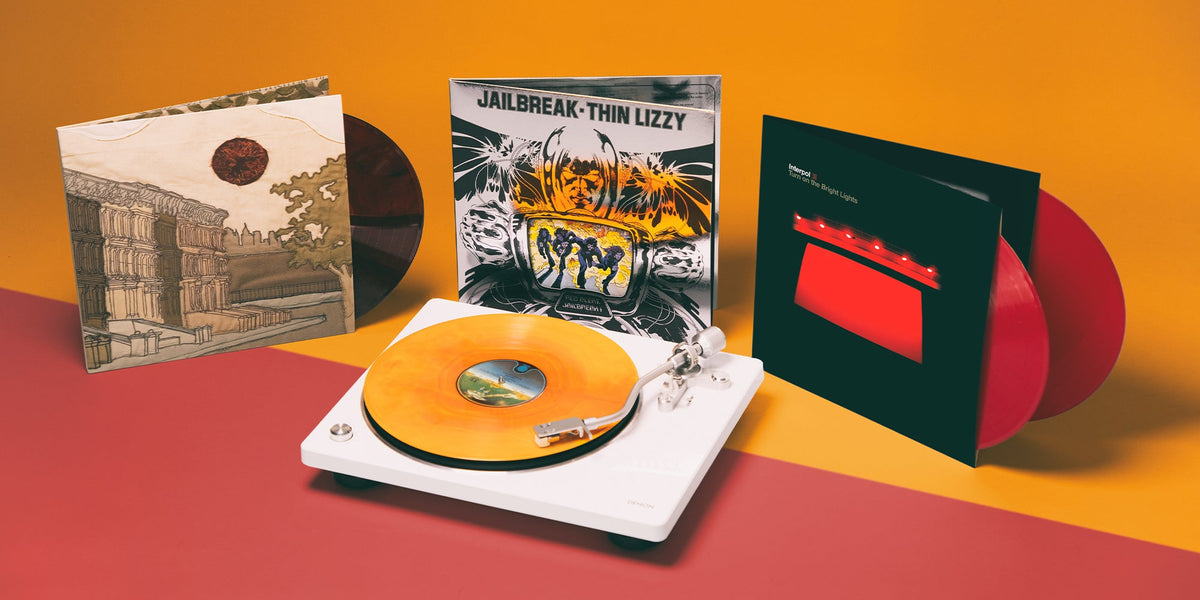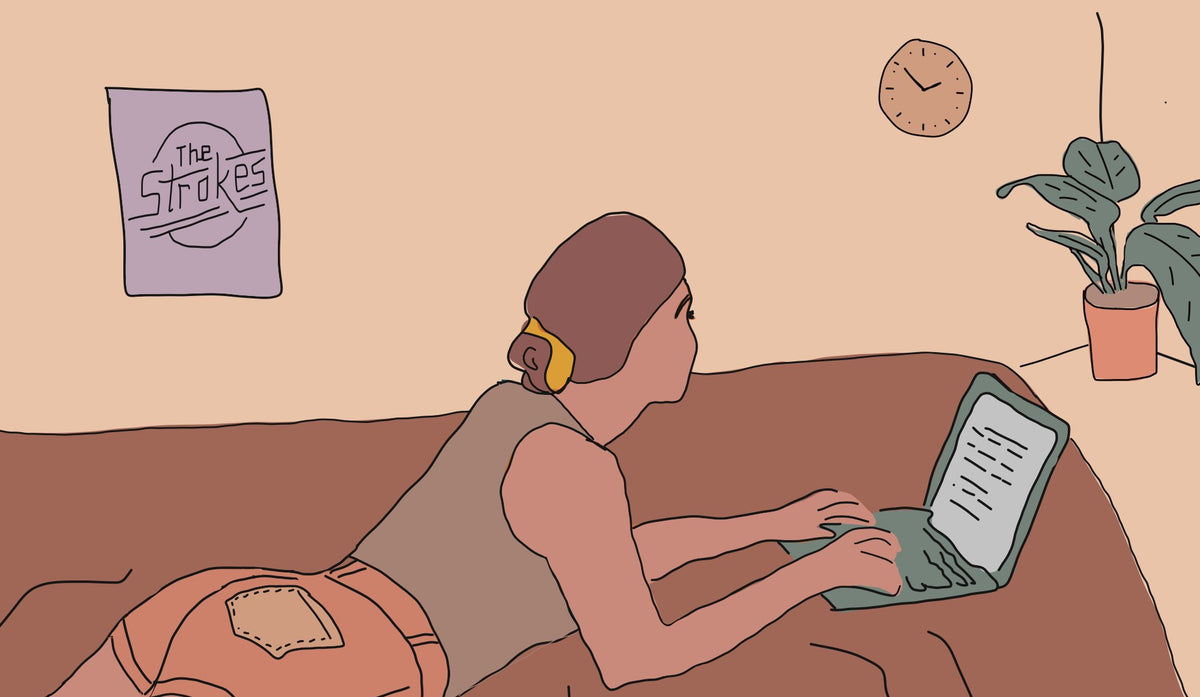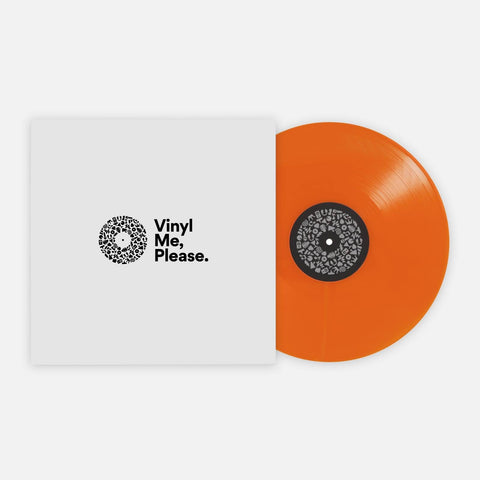Thin Lizzy’s Foundational ‘Jailbreak’
On the breakout 1976 album from the Irish rockers
There is a rich tradition in rock ’n’ roll of musicians pretending to be cowboys. In the 1970s, The Eagles made a career out of it, most notably with the outlaw cosplay of their 1973 concept LP, Desperado. In the ’80s, Jon Bon Jovi looked out at a sea of faces staring back at him in some far-flung enormodome and imagined himself riding a steel horse from town to town in “Wanted Dead Or Alive.” More recently, the talented indie singer-songwriter Mitski took this “rocker equals cowhand” rhetorical device to another level on her 2018 LP Be the Cowboy, in which she conceived of donning boots and chaps as a path toward empowerment against patriarchal adversaries, like a feminist Fistful of Dollars.
In rock music, “being the cowboy” isn’t like the Western movie ideation that’s common in country music. In that genre, identifying with cowboys is a way of conforming to a rural culture that deifies macho dudes who sport mile-wide hats and epically crusty mustaches. Being the cowboy is how you belong. In rock ’n’ roll, however, cowboy culture is about not belonging. It’s the posture of the outsider, the non-conformist who rides “lonesome on the trail” as “the howling winds wail,” to quote, hands down, the coolest rock cowboy of all time.
When it comes to rock outsiders, few can claim to have the credibility of the late, great Phil Lynott. Born in West Bromwich, United Kingdom, to a white woman from Ireland and a Black man from South America in 1949, he grew up twice derided as a biracial kid raised by a single mother during an intolerant era. At age seven, he was sent to live with his mother’s parents in Crumlin, a southern suburb of Dublin, an area where virtually no other Black people lived. When he returned to England over a decade later to properly launch his band, Thin Lizzy, Lynott again faced a double shot of prejudice in a country where “No Irish, No Blacks, No Dogs” signs could still be spotted in local store windows.
And yet, in the face of so much opposition, Lynott was indomitable. A handsome man whose sad eyes and sneering lips hinted at the soul of a warrior poet, he brought uncommon sensitivity to the hard rock world of the ’70s and ’80s, proving that even the toughest guys on stage can still have a tender side.
Take “Cowboy Song,” my personal favorite track from my personal favorite Thin Lizzy album, 1976’s Jailbreak. As the song opens, we find Lynott crooning softly over gentle guitar chords and a softly sighing harmonica. A connoisseur of stateside culture who was hooked on comic books — hence Jailbreak’s comics-style cover — and flashy Hollywood-set TV shows like 77 Sunset Strip, he found a way to insert himself into a quintessentially American fantasy. In that moment, he’s not a Black man from Dublin. He’s John Wayne.
But only for a moment. Soon, the sagebrush blows away as the band enters. Lynott’s gang has arrived, and they mean business — Brian Robertson and Scott Gorham harmonize guitar lines like gunslingers knocking down buzzards for target practice, then drummer Brian Downey bears down to clear away the bullet-ridden carcasses. Finally, the leader emerges from the smoke to take what’s his. Get John Wayne the fuck out of here. “Cowboy Song” suddenly becomes a ’70s Blaxploitation Western, in the vein of countless films starring Jim Brown or Fred Williamson. No prisoners will be taken on this day. And all outstanding debts will be paid.
But “Cowboy Song” isn’t just about musical carnage. As he does throughout Jailbreak, Lynott reveals himself, at heart, to be a romantic. “Lord I’m just thinkin’ about a certain female,” he sings. “The nights we spent together ridin’ on the range / Lookin’ back it didn’t seem so strange.” There is no “a lover or a fighter” binary on this album. Phil fights only because he loves.
When Jailbreak was released on March 26, 1976, rock ’n’ roll was at a fascinating crossroads. The old-school dinosaurs who led ’60s rock — The Who, Led Zeppelin, The Rolling Stones — were still standing but limping along, already sounding like nostalgia acts to younger listeners. The next generation of arena-rock groups — Aerosmith, Kiss, Black Sabbath — were grounded in a more flamboyant, “party till you puke” sensibility that would soon be subsumed by the ascendent heavy metal movement.
While Thin Lizzy formed in 1969, and then scored a hit four years later with their arrangement of the Irish folk standard “Whiskey in the Jar,” they didn’t really belong in either of those camps. In 1976, they felt like a new band, because in many ways, they were. Upon the departure of original guitarist Eric Bell in 1973, Lynott and Downey regrouped with not one but two guitarists. Initially, Lynott regarded this decision as an insurance policy — if one guy departed, he would still have one guitarist left over — but it would prove essential in remaking Thin Lizzy from a Celtic-leaning folk-rock group to a pivotal influence on countless punk and metal bands.
Both genres were still percolating in the mid-’70s, though these strands of heavy rock were about to be profoundly shaped by a new wave of bands. AC/DC, Cheap Trick and Motörhead would all prove to be pivotal influences on what metal became in the ’80s, while the Ramones (whose iconic self-titled debut came out just one month after Jailbreak) and the Sex Pistols (who dropped their debut single, “Anarchy in the U.K.,” that November) set the path for punk. And then there’s Thin Lizzy, who, in keeping with the stubborn individualism of their leader, could lay claim to both camps while belonging fully to neither. Jailbreak would prove as foundational to the future sound of metal as AC/DC’s High Voltage or Motörhead’s Motörhead, just as Thin Lizzy’s no-nonsense musical approach informed the sensibility of punk. The members of Thin Lizzy even dared to form a supergroup, The Greedy Bastards (or, The Greedies), with members of the Sex Pistols in 1978.
How did Thin Lizzy pull this off? There are two explanations, one musical and one philosophical. On the musical side, you have the essential additions of Robertson, a brilliant, if prickly, Scottish guitar wunderkind who turned 20 right before Jailbreak was released; and Gorham, a laidback 25-year-old Californian who quickly became one of Lynott’s most loyal lieutenants. After first teaming up on 1974’s Nightlife, a surprisingly soft-rock affair, they developed their distinctive harmonized guitar sound on the subsequent LP, 1975’s Fighting.
Unlike the southern-fried, jazzy quality of Duane Allman and Dickey Betts’ style of harmonizing in the Allman Brothers Band, Robertson and Gorham had a soaring, anthemic sound that felt … metallic. This was not music for smoking joints on the back porch at sunset. It resembles the sound of beer bottles smashing against bar tops as the air crackles in anticipation for an all-out brawl at closing time. It is — to reference a future Thin Lizzy album — live and dangerous.
The only problem was that Fighting — the most underrated album in the Thin Lizzy catalog — didn’t sell. Now, they faced a familiar predicament for talented but uncommercial rock acts in the ’70s, a directive from their record label that amounted to the following threat: “If the next one isn’t a hit, you’re out on your asses.”
Fortunately for Thin Lizzy, their “heavy guitars plus poetic lyrics” formula was fully honed in time for Jailbreak. This is true even when Lynott ventures back to his folk roots on the album-closing “Emerald,” in which he recounts an epic battle between the common man and his oppressive overlords as Robertson and Gorham preview the epic story-based heavy metal that Iron Maiden eventually carried forward. The spirit of uprising also carries over to “Fight or Fall” — Lynott obliquely references the ongoing civil rights struggle (“Brothers fight or fall / It’s man for man and one for all”) — and “Warriors,” an angry screed against militarism and those who serve the “death machine.”
For all of their many other attributes, Bon Scott and Lemmy Kilmister were not tackling such weighty subjects on their records. This brings us to the philosophical reason that explains why Thin Lizzy was a rare band who not only bridged the punk/metal divide, but also continue to appeal to younger generations.
It all comes back to Lynott and how utterly untypical he was as an arena-rock frontman. On one hand, he is an undeniable badass who (on stage, at least) seems capable of taking on all comers. On the other hand, he’s not … a jerk about it. All of that “toxic masculinity is inherent to the lineage of classic rock” stuff? It somehow doesn’t apply to Lynott. His magic trick is embodying rock machismo while also somehow transcending it.
Take the song “Jailbreak,” which appropriately opens the album with a bang. (Or, rather, the clang of an exploded prison door.) Over Robertson and Gorham’s dueling, impossibly hard guitars, Lynott informs us that “me and the boys” don’t like “it” — what “it” is, exactly, isn’t defined and ultimately doesn’t matter because the riff moves so damn fast — “so we’re getting up and going down.” Then comes my favorite lyric, the part when Phil sings:
Searchlight on my trail
Tonight’s the night all systems fail
Hey you good lookin’ female
Come here!
Coming from any other ’70s rock singer, this could be read as eye-rolling “stud” posturing. But from Lynott, it’s impossible to miss the wink. Remember: We are to believe that this guy is on the run from the cops. The searchlight is on his trail. All systems have failed. And this is the moment when he decides to put a move on a “good lookin’ female”? How can you not love this man? (It helps that few individuals have ever utilized the word “female” as well as Lynott does throughout the Jailbreak album.)
Like I said: Phil Lynott only fights because he loves. And he loves as hard as he fights on Jailbreak. The characters that populate these songs are cursed to live — like the protagonist of “Cowboy Song” — alone on the range. In “Romeo and the Lonely Girl,” the titular hero knows “on no one could he depend” after suffering a romantic portrayal. The cast of criminals Lynott documents in “Angel from the Coast” — Angel, Sally and the unnamed crook who gets away — appear to embrace the life of the loner. Only on “Running Back” does Lynott make his own personal connection to these characters explicit, singing about a rock singer who demands, “leave me by myself,” as he licks the wounds over yet another busted-up love affair.
All of these songs are great, but none of them quite amount to the can’t-miss hit that Thin Lizzy needed to make Jailbreak a career-saving smash. The song proved to be an outlier for Lynott in more ways than one, starting with its embrace of the group over the individual. A consummate rock outsider, Lynott ironically wound up writing one of rock’s greatest celebrations of community.
It started as an anti-war diatribe called “G.I. Joe is Back,” about a soldier who returns home from Vietnam. It had a good melody, but the lyrics were a bit clunky. Around this time, band manager Chris O’Donnell noted that a Thin Lizzy concert audience in Manchester was mostly made up of young guys who had just knocked off work and were now ready to escape the daily grind of their lives with some pints and loud rock ’n’ roll. Feeling inspired, Lynott changed the subject of his song from a soldier to his own fans.
And like that, “The Boys are Back in Town” was born. If you want to break it down with a critical eye, there is behavior in this song that, in a different context, might be construed as problematic. The boys are not afraid to spill some blood. They drink too much. They probably weren’t too cool to that “chick” at Johnny’s place. But it’s worth noting that Phil is an observer of “the boys” in the song, rather than a participant. And his attitude toward these “cats” is clearly affectionate. That carries over to the infectious music, which is powered by Downey’s swinging backbeat, the slashing yet melodic guitars and Lynott’s swaggering vocal.
“The Boys are Back in Town” has endured in so many ways over the years — as an FM radio staple, as a jock jam played during sports games, as an internet meme. It lives on, I think, because the song is so utterly guileless about the joy of going out with your friends on a Friday night and getting lost in the music. (And not just boys, either. Everyone is included here.) There is zero irony in “The Boys are Back in Town.” Even people who think they are enjoying it ironically eventually are won over, because it’s such a pure expression of primal exuberance.
The aftermath of “The Boys are Back in Town,” Thin Lizzy’s only Top 20 U.S. hit, for Lynott was sadly less ebullient. Plagued by professional setbacks and personal addictions, he slowly receded from public view until he died in 1986 at the unjustly young age of 36. But an essential part of his spirit — that rowdy yet thoughtful dichotomy — lives on in the ubiquity of “The Boys are Back in Town” and the durable quality of Jailbreak. All these years later, nobody has come close to replacing him.
Steven Hyden is a music critic and the author of five books, including Twilight Of The Gods, This Isn't Happening and Long Road: Pearl Jam And The Soundtrack Of A Generation, due in September 2022. He also is the co-host of two music podcasts, Indiecast and 36 From The Vault, and served as consulting producer of the 2021 HBO documentary Woodstock 99: Peace, Love And Rage. He lives in Minnesota with his wife and two children.
Related Articles
Join the Club!
Join Now, Starting at $36Pages







